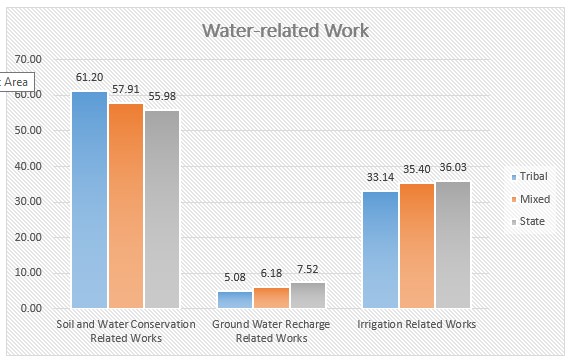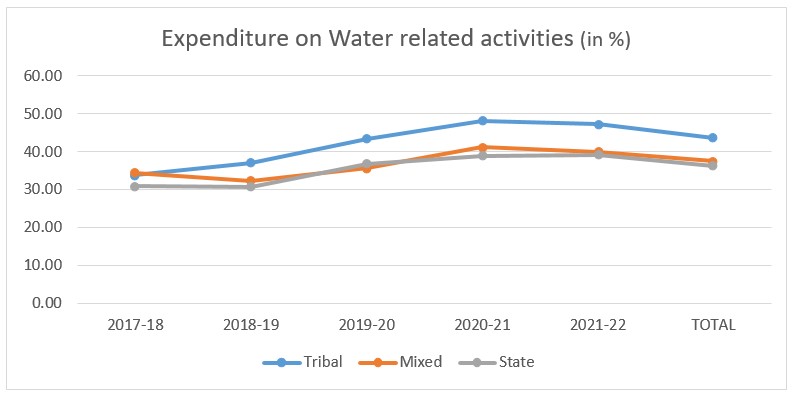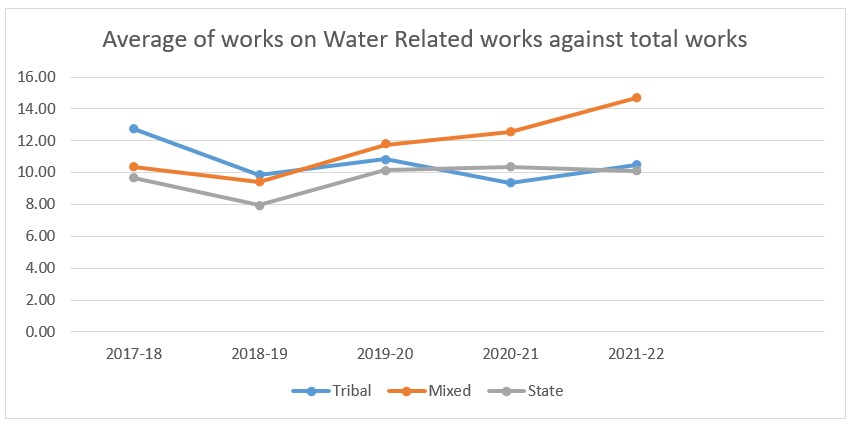
Out of India’s total population of 1210.19 million, 104 million, i.e., 8.6% are tribal (Census, 2011), India has one of the highest diversity among the tribes in the world. Broadly tribal inhabit two distinct geographical areas – the Central Indian Tribal Belt and the North-East. About 80% of the tribal population lives in the Central Indian Tribal Belt, stretching from West Bengal in the east to Rajasthan in the west.1
Many tribal communities live in unreachable areas with social and economic backwardness and fall under the low-performing communities under various development indicators. Significant sources of livelihood for them are agriculture and minor forest produce. Agriculture requires water for irrigation, and living in remote areas means irrigation depends on rainfall.
Madhya Pradesh, one of the Central India Tribal Belt states, has 15.3 million tribal people, constituting 21% of the state’s population. Important tribes living in the state are Bhil, Gonds, Kol, Korku, Sahariya, and Baiga.
Out of total agriculture area in Madhya Pradesh, unirrigated area amounts to 64.3%, and in tribal districts, it is 80%.2 40% of the tribals have small and marginal holding, of the land having land of below 2 hectares.
Recently, on a field visit to Madhya Pradesh and while interacting with farmers of Bijegaon village in Mandla district, we could see the impact of NREGA. Farmers have started demanding more interventions in the village. Earlier, farmers didn't know much about the work which could be done in the village under NREGA, and hence participation in the employment generation program was low. But with the help of Gram Rozgar Sahayak (GRS) and NGOs like PRADAN, villagers are now aware of the benefits they're entitled to receive under NREGA.
Various structures under soil conservation and water-related activities created under NREGA are check dams, 30-40 model of farming, farm ponds, farm bunding, gabion structures, etc. The government officials also emphasised that NREGA can be essential for various water-related activities.
NREGA was launched in 2005; its main objective is to provide minimum guaranteed employment to India's rural population. A minimum of 100 days of paid work is ensured to every rural household. For water related works, NREGA focuses on the supply side management for both the groundwater and irrigation. It helps in enhancing agriculture activities in rain-fed areas with the help of works such as water conservation and harvesting, drought proofing, and renovation of traditional water bodies.
Since tribal communities live in hilly areas with high water and soil erosion, NREGA has been very useful in land treatment through the ridge-to-valley approach.
The ridge-to-valley approach states hilly areas should be treated first. Land and drainage treatment should start from a higher elevation; gradually, lower elevation area should be treated. Thus valley lands would be treated in the end. It ensures that soil erosion is reduced and the treatments at the lower catchment are protected. It also helps water conservation and groundwater recharge. The treatment must be on an area basis; both community and individual lands must be treated.
The Annual Master Circular document of NREGA 2018-19 and 2020-21 clearly mentions that the "District Programme Coordinator should ensure that at least 60% of the works taken up at the district level, in terms of cost, shall be for the creation of productive assets directly linked to agriculture and allied activities through development of land, water, and trees. The DPC/ Collector will further ensure that the planning for works is such that at least 65 % of Expenditure under Mahatma Gandhi NREGS is on NRM works in FY2020-21 in the identified 2129 Blocks under Mission Water Conservation (MWC) rural Blocks of the country."3 4
An analysis of the water-related works in the years 2017 to 2022 under MGNREGA scheme has been shown in the graph below.

Graph 1 shows the amount of water-related work done in Madhya Pradesh. Work done under soil and water conservation for tribal districts is 61.20%, mixed districts is 57.91%, and for the whole state is 55.98%. Work done under groundwater recharge for tribal districts is 5.08%, mixed districts is 6.18%, and for the state is 7.52%. Less than 1% of the work has been under drainage and other related activities by all the categories.

In 2017-18 state’s expenditure on agriculture and allied works was below 60%. But from 2018-19 onwards, it's above 60%. The criteria for 60% expenditure on agriculture and allied activities has been matched, as mentioned in the Annual Master Circular. Importantly, in comparison to the mixed districts and state overall, the tribal districts have higher expenditure on agri-based work.

The above graph shows the expenditure on water-related works in Madhya Pradesh from 2017-22. Expenditure on water-related work is 43.19%, 37.34%, and 36.21% for the tribal districts, mixed districts, and state respectively. Again, the expenditure is high for tribal districts when compared with mixed districts and at the state. However, expenditure on water-related work should be at least 65% of the total expenditure on NRM activities under NREGA which could not be achieved.

On analysis of the percentage of water-related works against the total work done under NREGA. It revealed that tribal districts and the state have similar share of expenditures whereas mixed districts have higher share of expenditure on water related works in comparison to the state and tribal districts in the last three years.
There was a time when Madhya Pradesh was part of BiMaRU states for its underdevelopment and lack of contribution towards GDP. Today the state has made significant progress from where it started. The state is one of the highest producers of wheat and pulses.
A lot of this has become possible due to the improvement of land and water resources under NREGA along with other such schemes. Still, more water-related activities need to be done as the mandate of 65% under NREGA is still not fulfilled which can go a long way to help farmers get irrigation in remote and tribal areas. The activities listed under the new permissible NREGA have shown the potential to bridge the irrigation gap with a better strategic intervention in rain-fed regions, which will uplift tribal people to achieve good development indicators.
Endnotes
1. Lal, B Suresh. (2019). Tribal Development in India: Some Observations.
2. Gupta, S., 2019. Agricultural Trends of Rainfed Areas: Perspective on Scheduled Tribes in Central India. [ebook].
3. Master circular guide for programme implementation: NREGA FY 2018-2019. (2018).
4. Mission Water Conservation under MGNREGS. (2017).
/articles/water-conservation-and-nrega-tribal-areas-madhya-pradesh